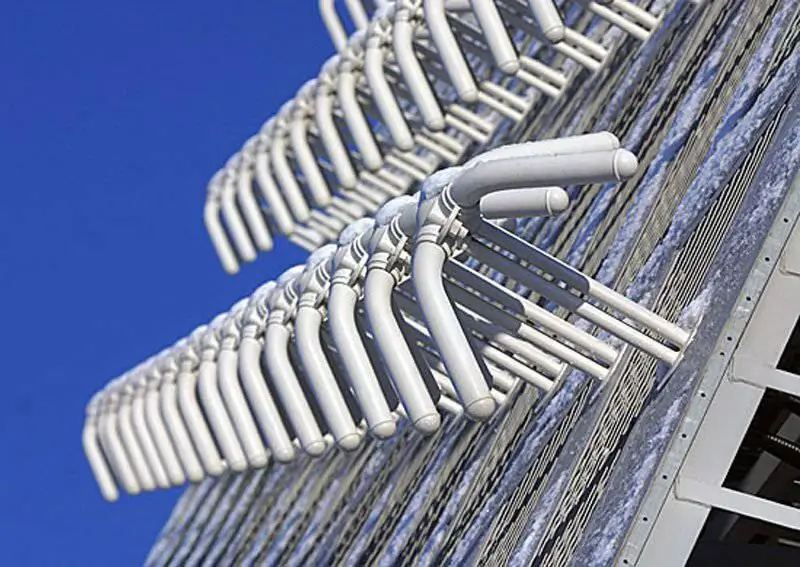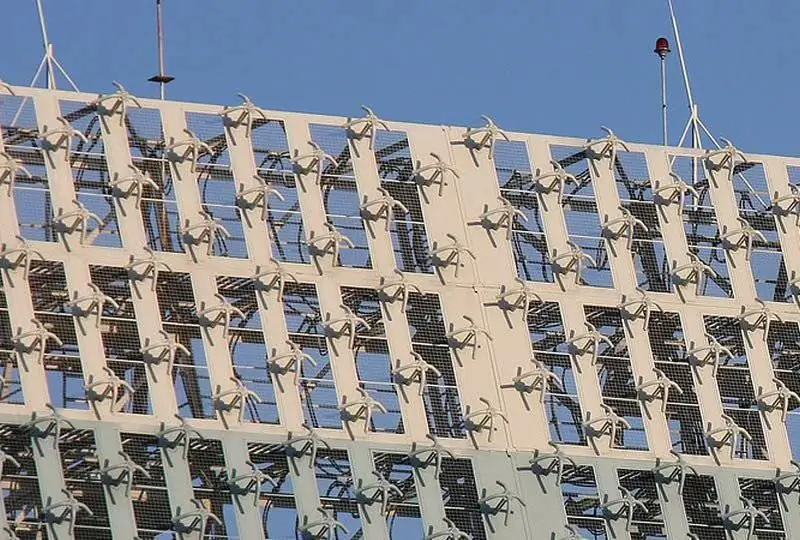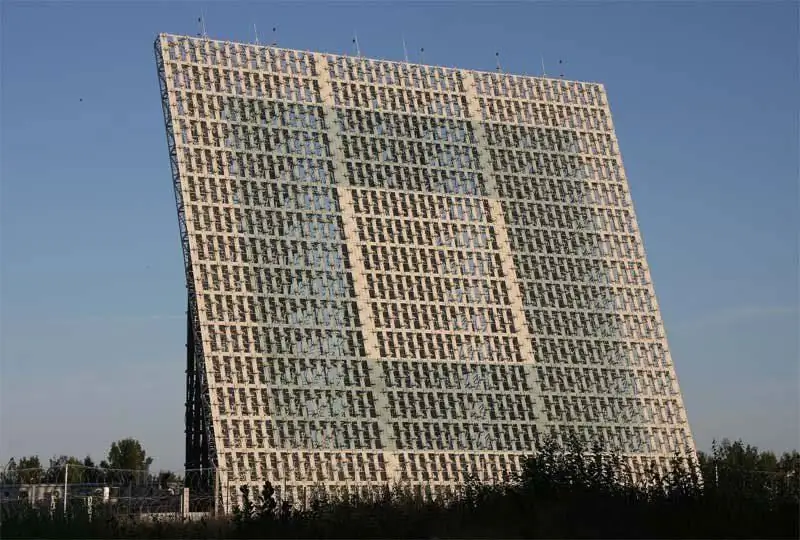- Author Matthew Elmers [email protected].
- Public 2023-12-16 21:49.
- Last modified 2025-01-24 09:17.
On June 1 this year, the Russian Aerospace Defense Forces will celebrate their first "jubilee" - they will be six months old. Only two weeks are left until the date and it is already known what the “gift” for the “birthday people” will be. By the end of this May, a new missile attack warning system (SPRN) radar station will be commissioned. It is located near the town of Usolye-Sibirskoye, Irkutsk Region. The new Voronezh-VP station belongs to the class of factory-readiness radar stations. Among other things, this means that the installation and debugging of equipment now requires less time than in the case of previous projects of early warning systems.



Antenna elements of the 77Ya6 "Voronezh-M" meter radar in Lekhtusi, object 4524, 08.08.2009 (photo from the archive of RussianArms. Ru, https://fotki.yandex.ru, first photo - https:// www. mil.ru, Voronezh-VP in the Irkutsk region is the fourth station of the Voronezh family. Let us remind you that the Voronezh-M station has been operating in the Leningrad Region for six years already, and in Armavir and the Kaliningrad Region they are preparing to put into operation a station of the Voronezh-DM project. In addition, the plans of the Russian military leadership include the construction of two more stations, similar to the one located near Usolye-Sibirskiy. According to available data, the first of them will be built in the Komi Republic and will replace the outdated Daryal radar, and the second will operate near Murmansk, where it will replace the Dniester-type station.
As can be seen from the intentions of the Ministry of Defense to plan the construction of new stations, they will be called upon to take on all the responsibilities of the missile attack warning radar, built during the Soviet era. At the moment, 2020 is considered as the date for this replacement. It is worth mentioning the reasons for choosing the Voronezh project as a replacement for the old stations. These radars were originally created on a modular system. Thanks to this, it is possible to change the composition of the equipment in the shortest possible time and, as a result, to adjust the characteristics of the station, depending on the conditions. Also, all electronic systems are divided into 23 main blocks. In this aspect, "Voronezh" can be recognized as breakthrough radar stations - the number of blocks in the "Dnepr" radar station was 180, while for "Daryal" this parameter exceeds four thousand. It is not hard to imagine how long it will take to re-equip Voronezh with new equipment. The antenna of the station is made according to a similar concept. If necessary, the radar of the Voronezh project can even be moved to a new location. Previous stations did not have such an opportunity and were built only in a completely stationary version.
The modular electronics system of the Voronezh project allowed designers from the V. I. Academician Mints and NPK NIIDAR to create, on a single basis, three main radar options:
- "Voronezh-M". The very first version operating in the meter range. The only station has been built in the Leningrad Region;
- "Voronezh-DM". Radar warning system operating in the decimeter range. This innovation made it possible to significantly increase the detection accuracy without degrading other parameters. This variant of "Voronezh" includes stations in Armavir (Krasnodar Territory) and Pionersky (Kaliningrad Region);
- "Voronezh-VP". An updated version of "DM". The letters in the name mean “high potential”. The exact characteristics of this update were not disclosed, but according to the available data, it can be concluded that there has been some increase in the range, detection accuracy and reduction in power consumption. The head station of the project in the Irkutsk region will soon be put into operation and the new warning radars will be similar to it.
Building new radars for missile defense is beneficial for the country for two reasons. First, the new stations have much greater potential (especially considering the architecture of Voronezh). Secondly, they are all located on the territory of Russia and, for obvious reasons, are more profitable than the Gabala or Balkhash stations. It is known that the station near Usolye-Sibirskiy will have an antenna field consisting of six sectors instead of the standard three. This will allow one radar to cover two sectors at the same time. The Armavir radar station will also be two-sector in the future. The diagram shows that with a certain relative position of the antennas near Irkutsk and Armavir, they may well cover a considerable part of the areas visible by the Gabala and Balkhash stations. In the long term, this will allow them to be decommissioned and not spend finances on lease and logistics issues. However, it should be noted that some of the "petals" of the foreign radar survey will remain uncovered. Probably, the military has sufficient grounds to lead the case to the transfer of all early warning radars to the territory of their country. Perhaps in the RTI them. Mints already know how to increase the viewing range of "Voronezh".
However, from the layout of the stations and their sectors of view, it follows that the missile attack warning radars are not able to follow far from all areas from which a launch can be made. From the very beginning of the creation of the domestic anti-missile defense, in addition to ground-based radar stations, it was planned to commission a group of spacecraft of a similar purpose. At present, of the entire constellation of satellites of the Oko-1 system, only a quarter of the total number is in working order. For several years now, representatives of the Ministry of Defense have from time to time raised the topic of creating a new Unified Space System (CES), but up to a certain point all this remained just talk. In mid-April this year, it became known that the CEN would still be created. Contracts were signed for the development and construction of a new series of satellites. According to unverified information, the first spacecraft designed to detect rocket launches will enter orbit in 2015-16. A full constellation of eight satellites will be assembled no earlier than 1919.
Summing up, we can say the following. Against the background of the events of the end of the last century, the situation with the construction of new stations gives some optimism. However, the full restoration of the lost potential, not to mention its improvement, will require time, effort and money. Especially a lot of these resources will be required to restore the space group of the early warning system, without which the operation of the radar loses a considerable part of its efficiency and usefulness. Nevertheless, our country simply does not have a choice and it is necessary to engage in the creation of the radar and CEN right now.






